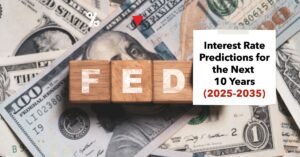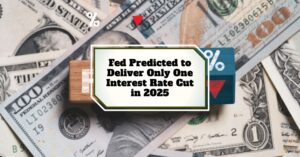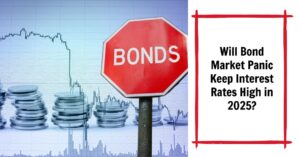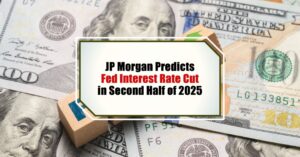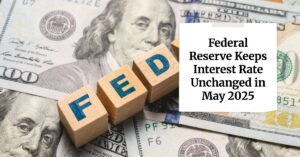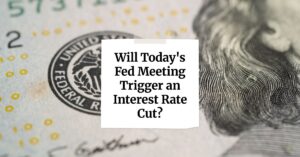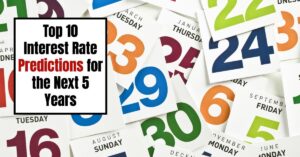The next Federal Reserve (Fed) meeting is scheduled for June 17-18, 2025. This important gathering of the Federal Open Market Committee (FOMC) will focus on the state of the U.S. economy, where key decisions regarding interest rates and monetary policy will be made in light of current conditions. In this blog post, we will explore the anticipated Fed meetings in 2025 and discuss their significance concerning mortgage and refinance rates, giving you an insight into what to expect going forward.
When is Fed's Next Meeting on Interest Rate Decision in 2025?
Key Points:
- Next Fed Meeting: June 17-18, 2025
- Importance of Meetings: These gatherings influence interest rates, affecting everything from loans to mortgages.
- Future Meetings: Upcoming Fed meetings include July 29-30, September 16-17, October 28-29, and December 9-10, 2025.
- Current Economic Scenario: The Fed's decisions are crucial in managing inflation and supporting economic growth.
Overview of the Federal Reserve's Role
The Federal Reserve plays a pivotal role in the U.S. economy, primarily by managing monetary policy through interest rate adjustments. These meetings are vital because decisions made can have far-reaching impacts on various financial domains, including consumer loans, credit cards, and home mortgages. Understanding the schedule and significance of these meetings can help individuals and businesses make informed fiscal decisions.
Upcoming Fed Meetings in 2025
Below is the schedule for the all FOMC meetings planned for 2025:
| Meeting Date | Decision Date |
|---|---|
| January 28-29 | January 29 |
| March 18-19 | March 19 |
| June 17-18 | June 18 |
| July 29-30 | July 30 |
| September 16-17 | September 17 |
| October 28-29 | October 29 |
| December 9-10 | December 10 |
These meetings occur approximately every six weeks, allowing the FOMC to stay in tune with the changing economic environment. After each meeting, the Federal Reserve typically issues a statement detailing decisions regarding interest rates and insights into future economic expectations.
Significance of Each Meeting in 2025
The Fed meetings scheduled for 2025 hold substantial weight as the U.S. economy is currently navigating various challenges, such as inflation and fluctuating employment rates. Here’s what to expect during each of these meetings remaining in 2025:
- June 17-18, 2025
- By mid-year, the Fed will require a comprehensive review of financial conditions. As inflation expectations may stabilize or fluctuate, the meeting could align policies to either maintain or slightly adjust rates, impacting borrower psychology in mortgage fields.
- July 29-30, 2025
- This meeting comes at a crucial time as it is the summer period, historically a time of slower economic activity. The Fed will assess if there's a need to stimulate growth or curb inflation based on the economic readings during the summer months.
- September 16-17, 2025
- Early fall will bring new data as students return to school and consumers resume spending. The Fed may decide to make rate adjustments to ensure economic balance during this crucial time when retail sales often pick up.
- October 28-29, 2025
- As the year rounds up towards the holiday season, the Fed will closely monitor consumer behaviors and potential inflationary pressures resulting from increased spending.
- December 9-10, 2025
- The final meeting of the year will assess how the economy has performed throughout 2025 and outline preliminary thoughts heading into 2026. Expectations around interest rates will be pivotal as homeowners look to refinance and purchase during the holiday season.
Current Economic Scenario and Expectations
As we advance in 2025, economic indicators are fluctuating, creating uncertainty surrounding inflation rates and growth prospects. The unemployment rate has seen fluctuations, and consumer confidence does seem resilient due to wage growth, but inflation fears remain prevalent. The Fed's challenge will be to balance these dynamics effectively through their actions at the upcoming meetings.
Market analysts are closely observing consumer price indices (CPI) and gross domestic product (GDP) growth rates to gauge if the Fed will be prompted to adjust rates. Should inflation persist at high levels, some economists expect that the Fed may consider raising interest rates more aggressively within the year.
As a result, understanding when the next Fed meeting occurs and the implications of its decisions can help consumers make more informed choices regarding their mortgages and loans.
Bottom Line:
The schedule of the Federal Reserve's FOMC meetings in 2025 offers essential insights into how monetary policy may shape financial landscapes affecting everyday Americans. The decisions made at these sessions will play a critical role in things like mortgage rates and refinancing options, given the current economic climate's challenges.
As each meeting approaches, individuals should stay informed about economic developments and outcomes from these discussions to better strategize their financial decisions.
“Position Your Investments in 2025”
With interest rates expected to fluctuate, smart investors are locking in real estate opportunities now to build long-term passive income and hedge against rising costs.
Norada offers turnkey, fully managed properties in high-demand markets—perfect for building wealth regardless of the rate environment.
HOT NEW LISTINGS JUST ADDED!
Speak to a Norada investment advisor today (No Obligation):
(800) 611-3060
Recommended Read:
- Interest Rate Predictions for the Next 10 Years: 2025-2035
- Will the Bond Market Panic Keep Interest Rates High in 2025?
- Interest Rate Predictions for 2025 by JP Morgan Strategists
- Interest Rate Predictions for Next 2 Years: Expert Forecast
- Fed Holds Interest Rates But Lowers Economic Forecast for 2025
- Fed Indicates No Rush to Cut Interest Rates as Policy Shifts Loom in 2025
- Fed Funds Rate Forecast 2025-2026: What to Expect?
- Interest Rate Predictions for 2025 and 2026 by NAR Chief
- Market Reactions: How Investors Should Prepare for Interest Rate Cut
- Impact of Interest Rate Cut on Mortgages, Car Loans, and Your Wallet


